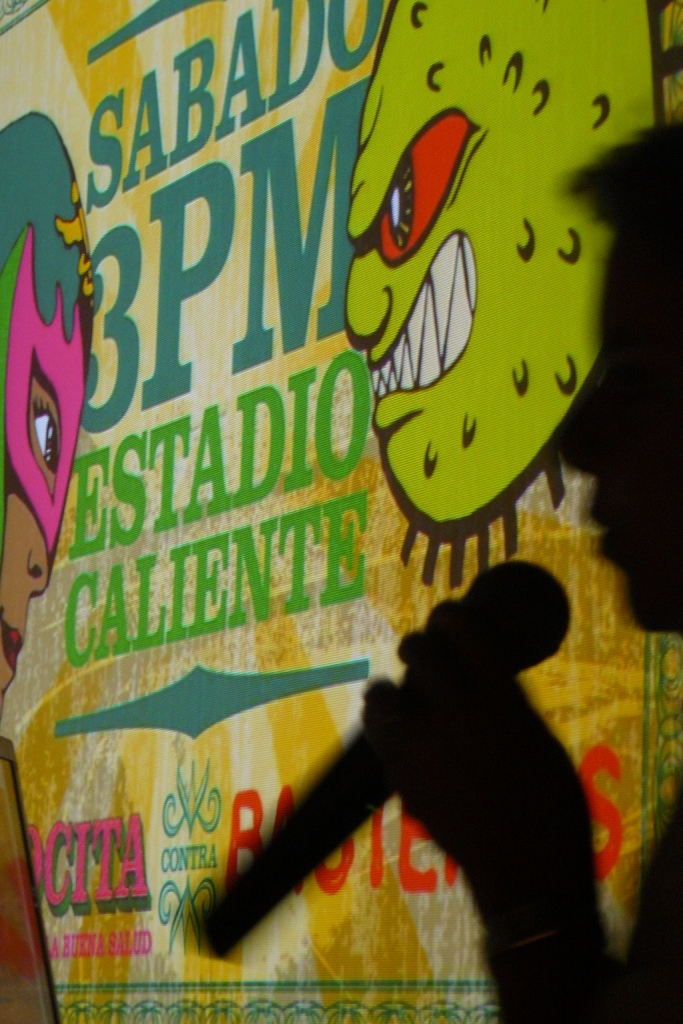Designmatters was part of the Big City Forum program recently–Leonardo Bravo’s “creative speakeasy” as he sometimes informally refers to it, a truly present-day LA salon that engages an eclectic group in conversation about the multiple layers (urban, civic, social, economical, design-driven) that make up the fragmented reality of our city.
It was thrilling to be invited to dialogue about “Design as a Catalyst for Change” with such a great group of practioners, artists, architects, and designers, and listen to Alissa Walker and her enchanting and witty brand of activism (follow her through her great blog Gelato Baby. Almost a full year out, Art Center’s own Sean Donahue gave a brilliant recap of LA Has Faults, the research and urban intervention Sean led in MacArthur Park, which became such a central component of the communication and public advocacy “disruptions” we designed for the LA Earthquake Get Ready project.
There was palpable energy in the room throughout the evening. Leonardo is committed to creating an “idea lab about the city,” and he is succeeding beautifully by my book.
A few days later I was fortunate to be included in another significant exchange in the magnificent setting of Philip Johnson’s Glass House. As a National Trust Historic Site, the Glass House not only represents a Mecca for modernism and the preservation of modern architecture, but is also positioning its mission and programs as a center point for innovation and new ideas. It is in this spirit of extending beyond boundaries and continuing the legacy of many influential conversations that happened throughout Johnson’s lifetime, that the Glass House Conversations now take place as invitational dialogues on a variety of issues. A short interview video with RISD President John Maeda provides a terrific reference of what these gatherings are all about in the context if this profoundly magical place. For ours, Maurice Cox from the National Endowment for the Arts moderated the “Citizen Designer” exchange. An anchor of the theme revolved around architecture and design education and practice: how do we build a cadre of public interest designers, and help foster new paradigms of engagement, relevance, and design for social impact moving forward?
Looking into the etymology of conversation, I am reminded of its Latin precursor and its definitions, “conversari: to associate with,” and “convertere: to turn around.” Both references capture how very dynamic these two conversations were–in the company of peers who are asking hard questions, framing the future thinking of our disciplines, and searching for drivers of change. Conversations that are bound to provoke exciting turn around models ahead



